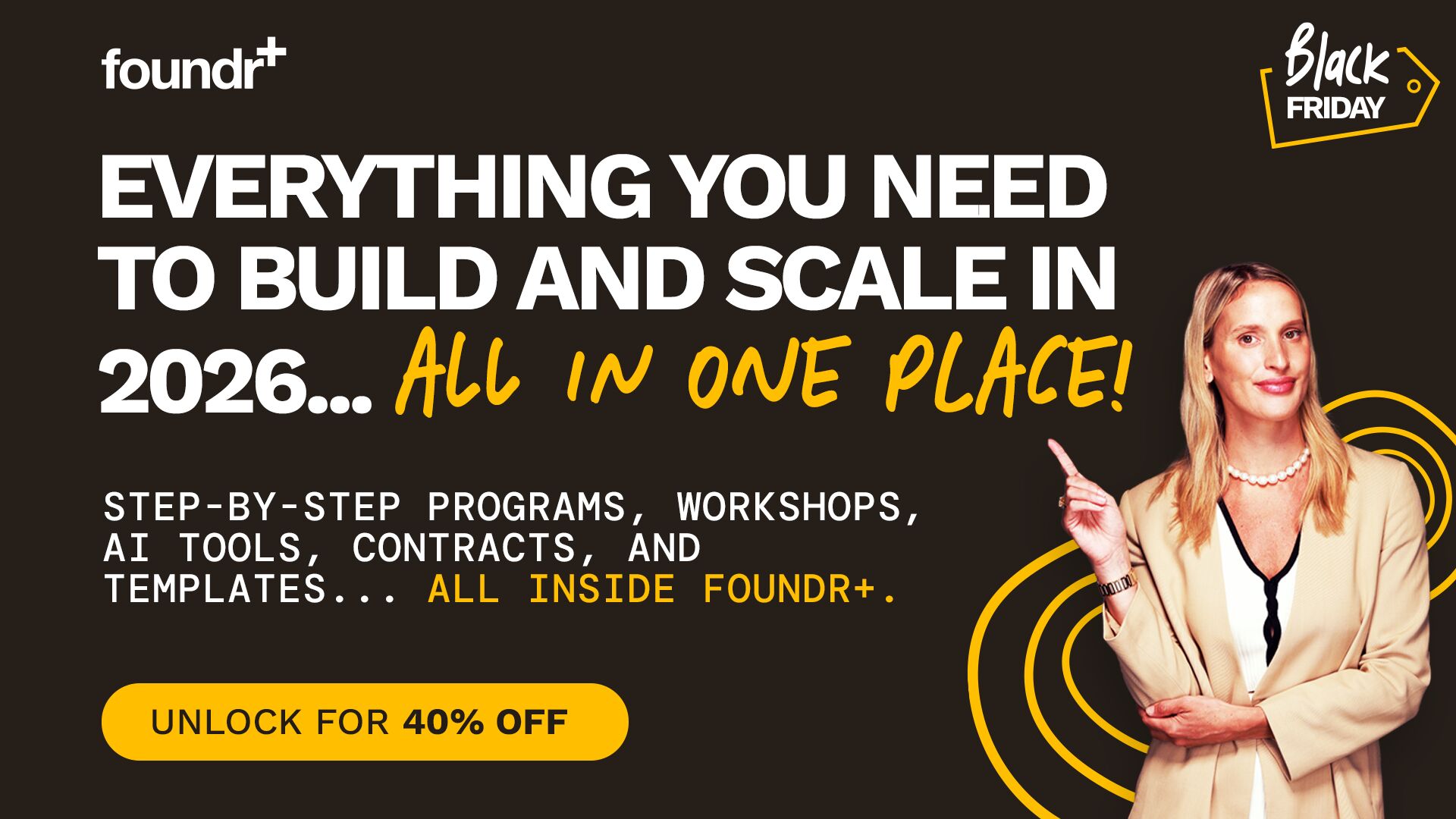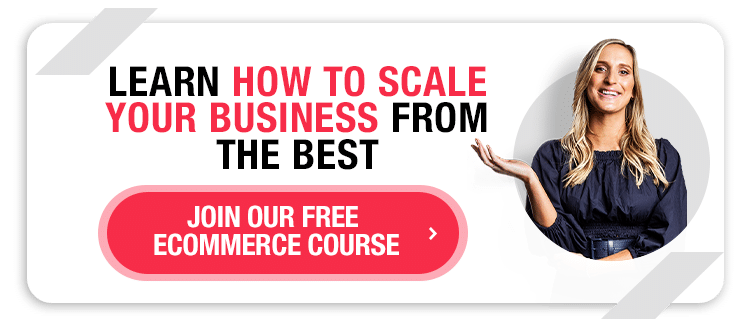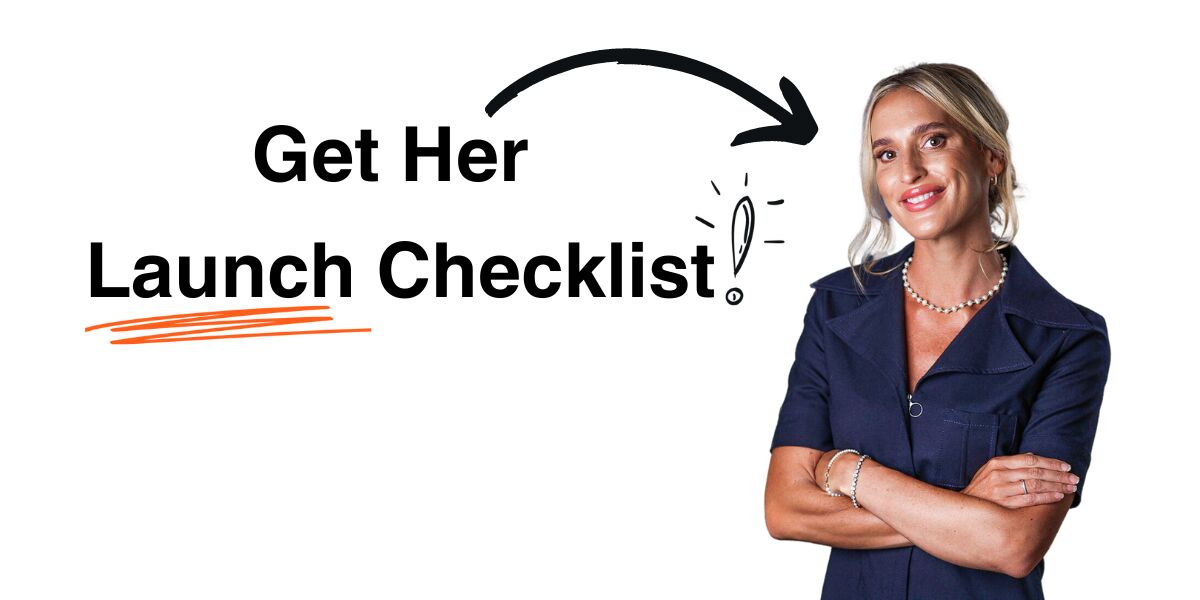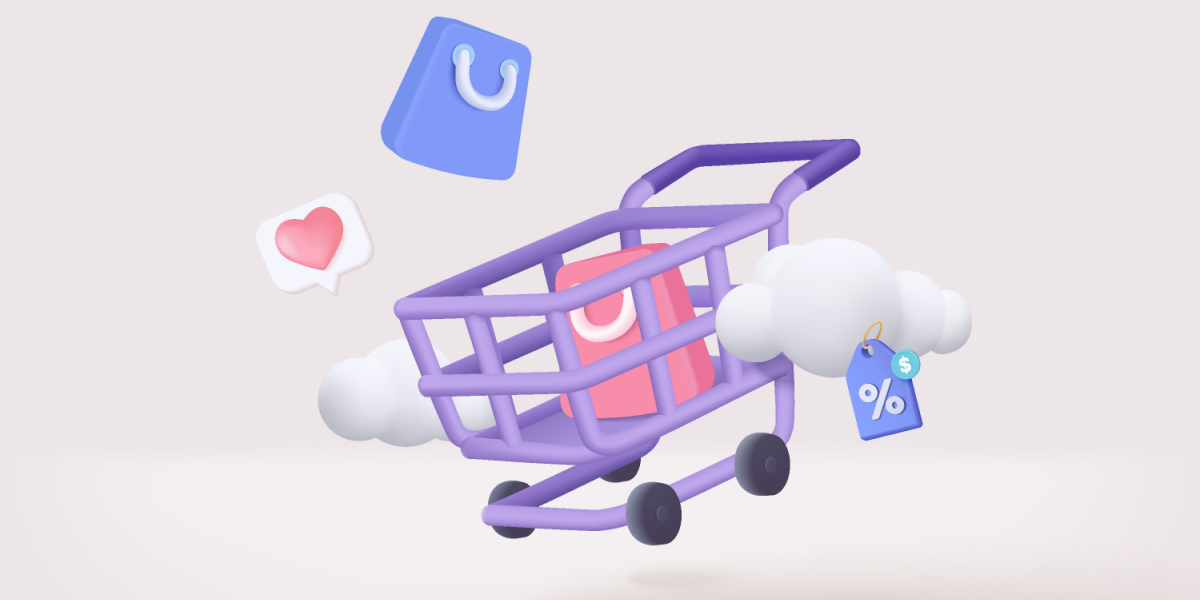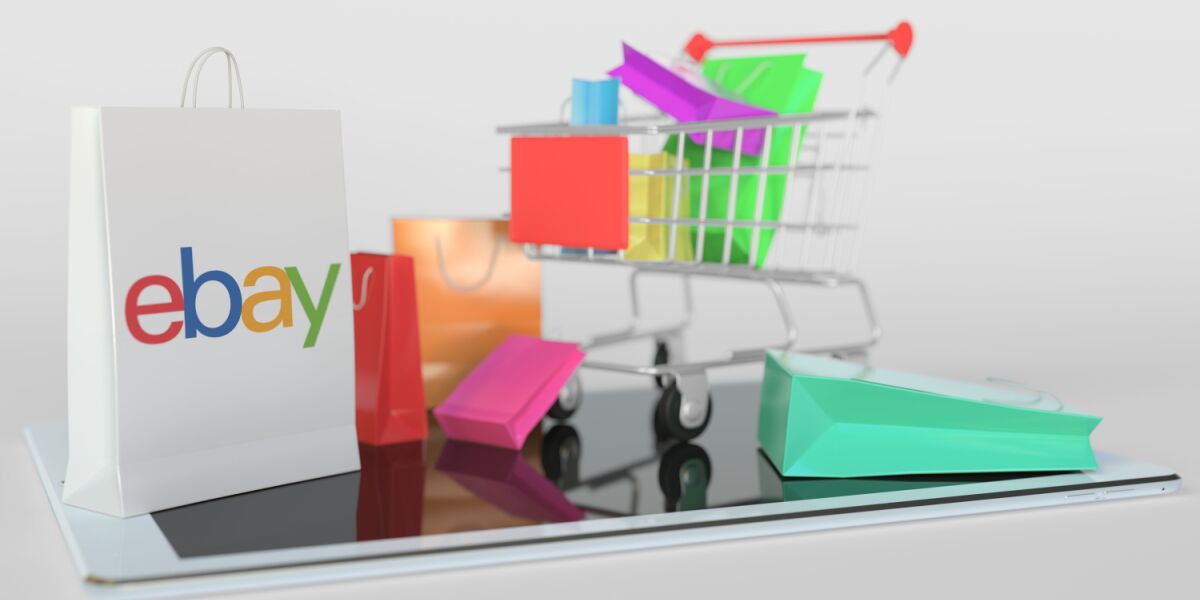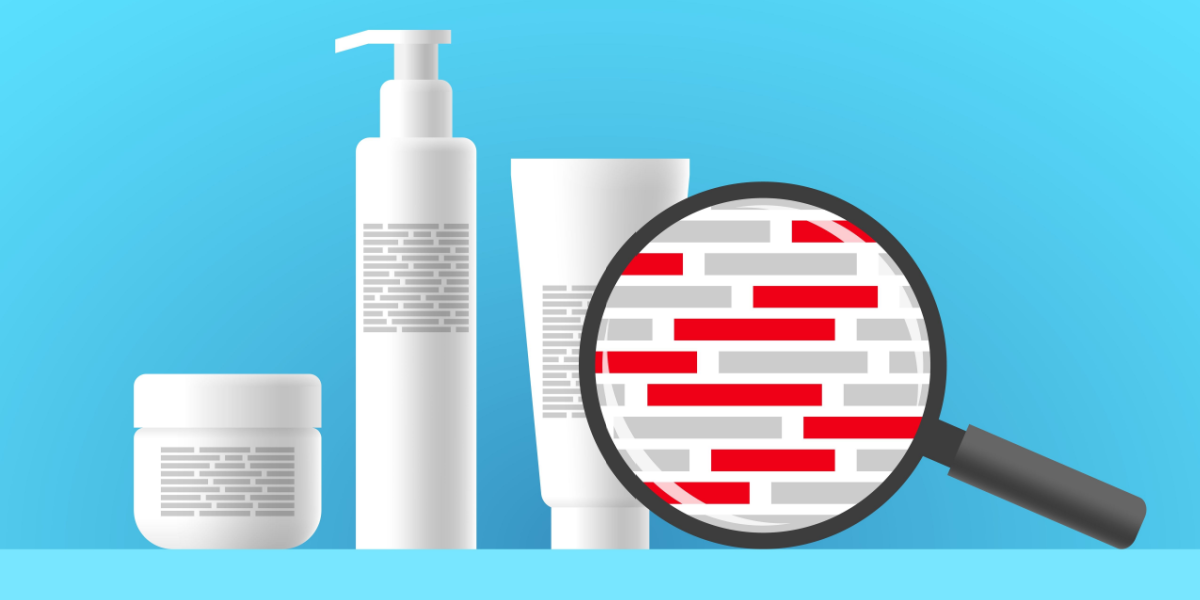If 2025 is the year for launching or going all-in on your ecommerce business, welcome to the family.
In three years, global ecommerce retail sales are expected to grow by 56% to a whopping $8.1 trillion. As a result, ecommerce has become the premier space for innovative brands to start and grow their reach—that includes you.
The competition is growing, which means you need to make ecommerce growth a priority for your business. In this article, I’ll share with you the latest ecommerce tips to grow your brand in 2025.
11 Ecommerce Tips for 2025 Success
You may have started in the ecommerce industry to build a revolutionary new brand, expand your market reach, or make some side cash. But no matter the reason, the pathways to ecommerce success can seem vast to any newcomer.
Don’t worry. At Foundr, we’ve interviewed the most successful ecommerce business leaders on the planet, and I’m sharing their tried and true methods with you. Check out the ecommerce tips below that can make a difference for your business this year.
Don’t Skip: Ecommerce Tips for Beginners from a Veteran
1. Use AI tools (surprise, surprise)
2023 was definitely the year of generative AI. We even hosted a summit all about AI tools and strategies for ecommerce. So, expect AI to be a more critical part of your ecommerce business in 2025.
If you haven’t started implementing AI tools in your business, don’t worry (for now). We’re still in the early stages of the new era of AI. But your competitors likely use AI in their processes already, and if you don’t jump on the bandwagon, you will be left behind.
Fortunately, I’ve pulled together a list of tools and AI specialists to keep you in the know all year long about how AI is evolving.
- How to Write AI Prompts for Ecommerce Brand Content
- How to Use AI to Start a Business in 2025
- 7 AI Tools For Amazon Sellers: Boost Your Sales Today
- Introducing Our AI-infused Ecommerce Course
- Creating Humanized Automations Using AI with Nat Choprasert
2. Find an e-commerce platform that can grow with you
I’ll shoot it straight with you. The ecommerce platform I recommend for setting up a store quickly and efficiently is Shopify. But just because Shopify is one of the most popular ecommerce platforms doesn’t mean it will benefit your business. Before selecting your platform, try and answer the following questions to make an informed decision.
- How many products are you planning to sell?
- How much are you willing to pay for a platform?
- Will you need accessible technical support or are you comfortable going it alone?
- Will you need imagery, video, and creative features to sell your products?
- In 5 years, how much business do you hope to have?
The key to selecting an ecommerce platform is to choose one that will grow alongside your business. You don’t want to get into a situation 6 months from now where your quick decision creates the need for an entirely new platform. The guides below will break down each ecommerce platform with its pros and cons.
BigCommerce vs Shopify
Shopify vs Squarespace
How to Set Up a Shopify Store in 8 Easy Steps
6 Best Ecommerce Platforms
3. Find a manufacturer that aligns with your values
A manufacturer for your ecommerce product is a relationship that can make or break your business. However, it can be intimidating to know where to start. And once you’re talking to manufacturers, how will you know they’re the right fit? Below are the first 3 steps you need to take when looking for a manufacturing partner.
- Decide whether you want to make your products from scratch or go through a supplier.
- Reach out to local manufacturers in your area.
- Widen your net and find global manufacturers on Alibaba.
Once you’ve narrowed down your list of manufacturers, then you’ll need to ask the right questions to see if they’re going to be a valued partner for your business. Here are some manufacturing questions to ask before signing on the dotted line.
- What are the communication preferences of the manufacturer?
- What is the size of the operation?
- What are their order minimums? Will they be able to scale?
- Will you have access to different leaders within the manufacturing business?
- Have they produced similar products to the one you’re requesting?
- Are you looking to create an original product and control intellectual property?
- Does the manufacturer treat their employees fairly?
- Does the manufacturer use sustainable processes or ingredients?
- Can you visit the manufacturing plant?
It may seem like overkill to be this thorough when you have a launch deadline looming or are struggling to get your product made, but this decision will have consequences—both good and bad. Take it from skincare entrepreneur Sarah Muir.
Sarah fired her manufacturer right before a product launch because they weren’t honest about meeting the sustainability standards she had set. Sarah bounced back and found a better manufacturer that allowed her to launch Palm & Pine Skincare with 2 original formulations and control all intellectual property. Listen to her story below.
4. Review your market product fit
Gretta van Riel started 4 multimillion-dollar ecommerce brands and knew how to find the right market for her products. Her strategy reverses the traditional business saying of “product market fit” to “market product fit” when building a new ecommerce brand.
Why? Because you may have a great product idea, but if you blow your budget before identifying the correct market fit, then your business will collapse before it begins. Gretta says:
“New entrepreneurs think that their product is so amazing and it’ll appeal to anyone. Therefore, their target market is everyone. Nobody can afford to market to everybody. So to get more ROI (return on investment) out of your marketing, you need to find the group of people who your offer is the most compelling for.”
Don’t freak out if you’ve made the mistake of marketing to everyone everywhere. Instead, take time to look at the customer data you have or create customer personas of the potential people you’re hoping to reach. Think about the demographics and psychographics of your target market.
Using demographics and psychographics
Demographics are data related to population groups and how they’re organized. Demographics include age, race, ethnicity, gender, marital status, income, education, and employment.
Psychographics are data related to the attitudes and psychological behaviors of people. Psychographics include personality traits, lifestyle, interests, opinions, beliefs, and emotional reactions.
Use demographic and psychographic factors to create customer avatars to discover your market product fit. For example:
“Married women, ages 25-45, with full-time jobs, who like to hike, and support environmental groups.”
The possibilities to “niche down” on a target market for your ecommerce brand are endless.
5. Launch or relaunch a product
Whether you’ve recently started your ecommerce brand or are on year 3 looking to expand, launching or relaunching a product is the perfect way to build momentum with customers and generate profit.
The problem many young entrepreneurs face is how to tell those customers that there’s a product offer available. The key is providing value.
That may look different if you’re launching a new product or reintroducing a classic. So, here are tips to make your ecommerce product stand out to new and loyal customers alike.
- Release the Vault: Do you have old products lying around your storage closet or warehouse? Chances are you have customers that love the product or missed out the first time. Release the products with scarcity value. Create a marketing campaign with messaging like “one-time only sale,” “limited time only,” or “from the archives.” Fans of your brand will be delighted to see classics available again, and newcomers will be able to discover new purchase options.
- Build the Hype: The internet goes crazy every time a new Marvel movie trailer is released, and this fandom behavior can work for your brand as well. Tease a new product with subtle messaging on your social platforms, give your email subscribers early access, or add a presale button to the product page. The more excitement you build around a product launch, the more likely your customers will commit to ordering.
- Target Customer Behaviors: If you’ve made a robust email list or customer database, utilize the data to target products people will be interested in. You can provide an exclusive discount to loyal customers, or share upsell offers to repeat purchasers. Use their purchasing behaviors to predict what products align with their desires.
6. Utilize first-party data
The days of running Facebook (now Meta) ads for your ecommerce brand and getting 2.0 ROAS are over. Apple led the way in locking down customer privacy, making it harder to reach your desired customer. The change in privacy over the last two years means that first-party data is the most important tool to reach, nurture, and convert customers.
First-party data is customer and purchase information that your brand owns (contact information, purchase history, etc.). This data will allow you to know your audience and customers better so you can market to them in an appropriate way. You can market to them using retargeting on social media ads, email, SMS, search ads, or old-school ways like mail and sales calls. If treated correctly, first-party data is a win for the customer and your brand. If treated poorly, you’ll quickly burn through your audience.
Here’s how you can acquire first-party data:
- Email subscribers
- SMS subscribers
- A pixel that you own on your website
- Organic purchase information
- In-person sign-ups at events
With your first-party data, you SHOULD:
- Welcome customers to your brand
- Delight them with discounts, offers, and exclusive deals
- Know their purchasing behavior and customize your offers
- Send them a note on their birthday with a discount code
- Clearly communicate how you’re using their data
With your first-party data, you SHOULD NOT:
- Spam customers’ inboxes with hordes of sales emails
- Send them communication that isn’t applicable
- Sell them on a product they already purchased
- Communicate only about transactions
- Sell their data to a third-party
7. Use your customer reviews
Social proof is validating a business through user-generated evidence. In the ecommerce world, this means customer reviews.
You can use customer reviews passively or externally to build your brand. First, ensure that it’s easy to leave a review on your product pages and social media. Then, if you don’t have many reviews, create a social media campaign that incentivizes your customers to share their opinion.
Here’s where the external strategy can make a difference. Once you’ve gathered a slew of quality customer reviews, use them in marketing materials and showcase them across your website and social channels. People follow people and potential customers follow repeat customers.
Customer reviews are a powerful resource to grow your community and increase your add-to-carts.
8. Don’t blow your budget on ads
Sometimes ecommerce tips can serve as a warning. A common mistake for new brands is going all-in on social media advertising before evaluating their organic growth potential. Master the ins and outs of Facebook advertising or have a funnel strategy before blowing your advertising budget.
Nick Shackleford has spent over $100 million on Facebook Ads and has a proven strategy for high-converting ads. Watch this video, and Nick will walk you through how to build a successful ad framework.
In the meantime, look at ways to grow organically with social media, blogging, and SEO. Trinny Woodall used her 20 years of fashion TV experience to launch the beauty brand Trinny London in 2017. She suggests bootstrapping as much as you can at the beginning and then filling gaps with expertise.
Watch the video below to hear her views on organic content marketing.
9. Use TikTok and other platforms
TikTok is the most downloaded social media app on the planet, so if you’re not using it to bolster your ecommerce business then you’re missing out on an untapped audience. But TikTok isn’t like other platforms. You need to learn how to speak the platform’s language, so you can relate your brand to your audience.
Mia Dickson was three weeks from launching her second business when she decided to post about her product on TikTok.
With her face to the camera, Dickson started sharing how and why she began Safe Bandz, which sells waterproof wristbands and pet collar attachments that store contact numbers and other information that’s important in an emergency. Soon, viewers started asking questions: How do the bands work? Which colors do they come in? Can I use them for my pet?
Dickson happily responded to the questions on TikTok. In the process, she began building an audience of parents, caretakers, and pet owners searching for a safe solution to track their loved ones.
“And it just slowly grew and grew and became this big marketing machine for us that was very organic and very honest to what we are and wanting to help.”
The organic momentum on TikTok helped Safe Bandz generate $10,000 in sales within two weeks of launch.
“Even though you can find all that information on the website, to sit there and chat to someone and feel like you’re getting to know them, [and] you’re getting to know the person behind the brand as well,” Dickson says. “And I think that’s made a huge, huge difference for our audience.”
Read our guide on growing your TikTok account from expert Talia Datt.
Launching an ecommerce brand on TikTok might not be the right tactic for you, but don’t be afraid to experiment with new marketing channels.
Randy Goldberg and David Heath are the cofounders of Bombas, an apparel brand that donates 1 item for every item purchased. Foundr CEO Nathan Chan asked them what mistakes young entrepreneurs typically make. Randy and David said that a common mistake is trying to copy a marketing strategy that is successful by another brand.
“We talk often if we were starting over right now, we wouldn’t do it the same way. It would have to be completely different. So we’re actually looking at the next generation of companies or who are reinventing how to find their customer base, how to market themselves.”
Review your target market. What other platforms and places are they spending their time? Sometimes an alternative marketing tactic can differentiate your brand and boost your sales. Here are additional marketing channels you can experiment with:
- Short-form content on TikTok, Reels, or YouTube Shorts
- Community social platforms like Reddit or Discord
- Traditional marketing (TV, radio, print ads)
- Start a blog or submit guest posts to industry-related platforms
- SMS messaging
10. Find a mentor
You won’t be able to grow your ecommerce brand without the support of a mentor or network. Having an experienced professional who’s been in your shoes will be necessary when you don’t have the answers—trust us, you’re bound to have a moment of doubt.
Fortunately, it’s never been easier to find a mentor or join a community of like-minded ecommerce entrepreneurs. That’s why we offer access to our community of entrepreneurs when you sign up for a free course.
Sometimes a mentor is a person that can just tell you that you’re not alone, but this relationship can also lead to new business opportunities. Take Daniel Álvarez Yunes. He reached out to a mentor from his university when he started his first ecommerce brand. Through that relationship, they ended up creating a digital agency together.
Listen below to learn how Daniel’s mentor became his business partner.
11. Embrace what makes your brand different
This tip is simple but crucial for your ecommerce brand. Hundreds of brands may sell a similar product to yours, but your differences will make you stand out. Lean into what makes you different as an entrepreneur, leader, and business owner.
Dany Garcia, the founder of The Garcia Companies, is living proof that it’s possible to run multiple successful businesses all at once. Her portfolio includes entertainment, sports, food, business, and fitness brands. In our exclusive magazine interview with Dany, I asked her what advice she’d give to her 10-year-old self.
“I would say to myself at age 10, you are going to be different for the rest of your life, and that’s going to be your superpower.”
What makes you different makes you strong. Ingrain that belief in yourself and apply it to your ecommerce brand.
Keep Learning: 11+ Ecommerce Tips For Marketing and Boosting Your Online Sales
Ecommerce Tips FAQs
How do I optimize my website for search engines?
What problem is your brand trying to solve, and how would a potential customer search for it? The answer will help you embed the correct language throughout your product descriptions and website. More advanced tactics include developing detailed product photo metadata, creating 3D product images, and developing an organic content strategy. Remember, optimizing for search takes patience and consistency.
How do I handle customer service and support for my ecommerce brand?
When you're starting out, we suggest personally handling your customer service so you learn what the customer issues are. Then you can utilize customer feedback to improve your products and processes. Once you've scaled enough where customer service emails take up more than half of your day, invest in an AI chatbot or outsource customer service.
How do I stay competitive in a crowded ecommerce market?
The ecommerce competition is fierce, but the best way to stand out is to iterate by solving a problem or communicating the solution differently through your brand.
Develop Your Ecommerce Skills
These ecommerce tips are just the beginning of your investment in growing your ecommerce brand. Sign up for our free ecommerce course taught by Gretta van Riel so you can learn how to start and scale a successful ecommerce brand from scratch.

